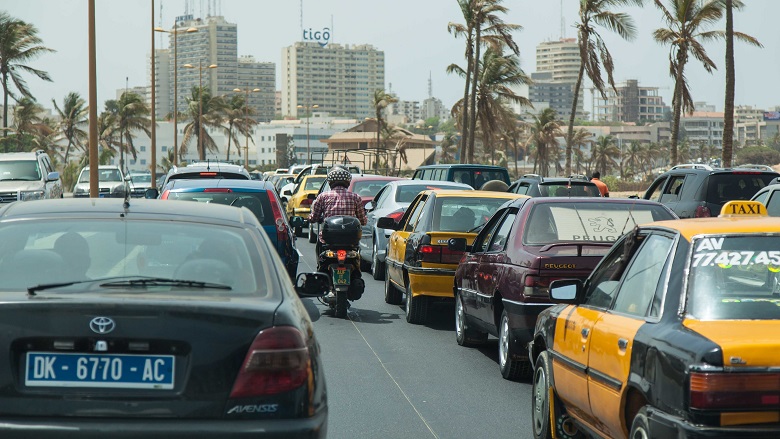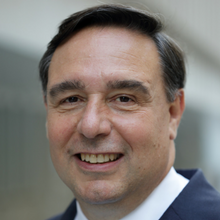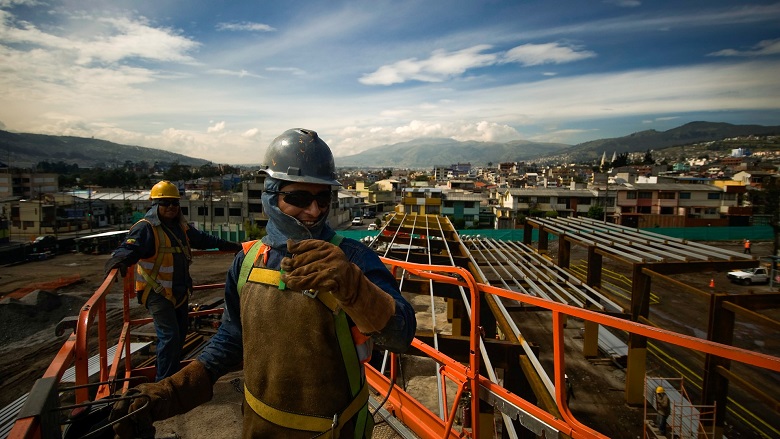A pressing need for climate action and improvements to mobility are on a collision course, and transport is at the center of it all. On the surface, it may seem that countries need to prioritize one over the other.
“There is often a perception that rising transport emissions are a de facto by-product of GDP growth—a necessary price that countries have to pay if they want to develop. But experience on the ground has shown the opposite: with the right policies and investments, climate-smart transport not only reduces emissions but can also bolster economic growth and other development outcomes, ranging from public health to social inclusion,” says Binyam Reja, World Bank Acting Global Director for Transport.
In FY21, the World Bank approved 19 new transport projects for a total of $3.6 billion. Some 59% of World Bank transport projects now include climate co-benefits, which means they directly contribute to reducing countries’ GHG emissions and/or enhancing climate resilience.
In Senegal, for example, the World Bank is financing a Bus Rapid Transit System in Dakar that will save 434,000 tons of greenhouse gas emissions while putting an additional 120,000 employment opportunities within the reach of low-income residents. In Quito, Ecuador, a new metro line co-financed by the World Bank will transport 400,000 people daily and get thousands of private vehicles off the roads. And in Egypt, we worked with the government to scrap and recycle 45,000 aging “clunker” taxis, reducing carbon emissions by nearly 220,000 tons.
A construction crew working on the World Bank-supported metro project in Quito, Ecuador. Photo: Paul Salazar/World Bank. More of these customized, large-scale projects are needed. But equipping developing countries with modern, green and inclusive infrastructure comes with a high price tag. The World Bank estimates that the annual transport infrastructure financing gap could be as much as $944 billion annually through 2030. This dwarfs the limits of traditional sources of funding such as government budgets or multilateral assistance.
To amplify the impact of this work, the World Bank recently launched the Global Facility to Decarbonize Transport (GFDT). During the 2021 COP26 Climate Change Conference, the initiative received initial funding from 4 donors – Germany, Luxembourg, the Netherlands, and the United Kingdom.
“Many solutions for reducing the climate impact of transport already exist, from making public transport greener to using electric and hydrogen technologies,” says Greg Hands, the United Kingdom’s Minister for Energy, Clean Growth and Climate Change. “I look forward to working with the Global Facility to Decarbonize Transport (GFDT) over the coming years to scale up investment and adapt these solutions, so every country can be part of the global transition to Zero Emission Vehicles.”
The GFDT has a double mandate. First, it will conduct research and analytical work to help governments prepare bankable, context-relevant projects. Second, the Facility will complement traditional World Bank financing to pilot a new generation of climate-smart transport programs, with a focus on innovative solutions that could not happen without GFDT support.
With a first tranche of projects to be announced in 2022 and more donors expected to join in the coming months, the GFDT is quickly moving from concept to implementation.
Bucking the trend will require urgent and ambitious action.
For Amassir Ngon and other citizens around Dakar, the progress is evident. With World Bank support, the previously hours-long commute now takes just 20 minutes. The now-underway BRT route will connect even more people to opportunities while lowering emissions. With more projects like these, developing countries will not have to choose between development and climate action.




